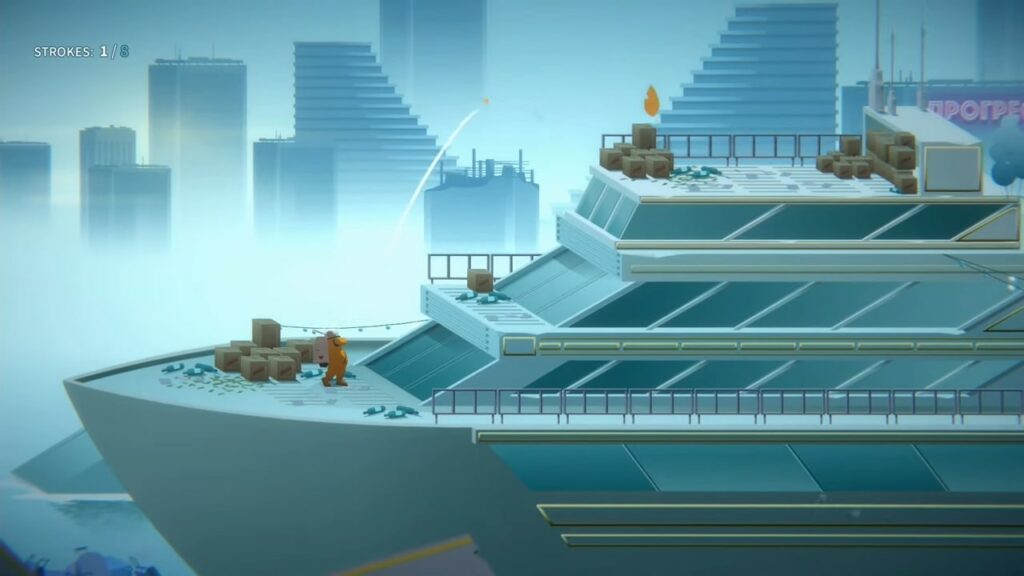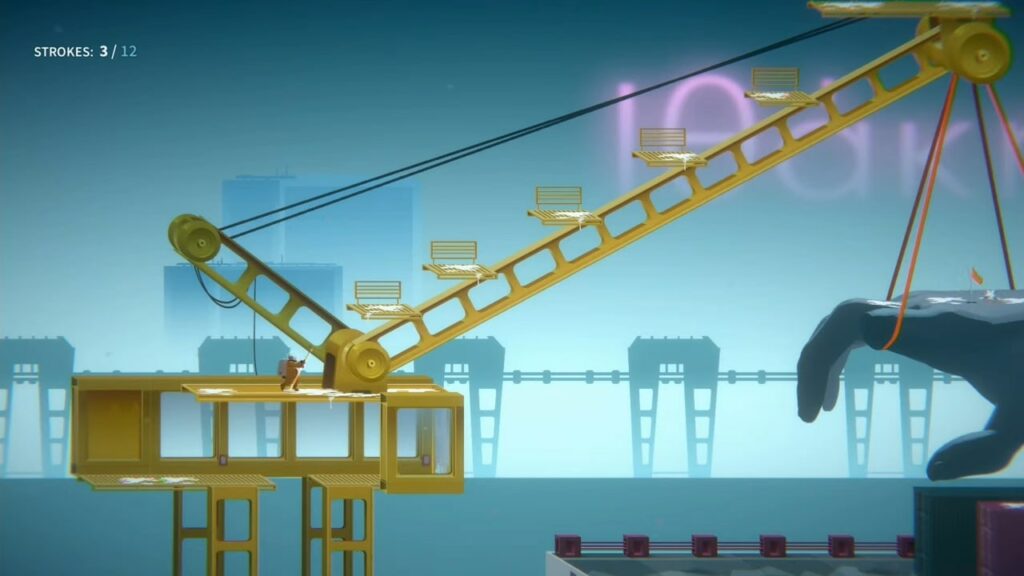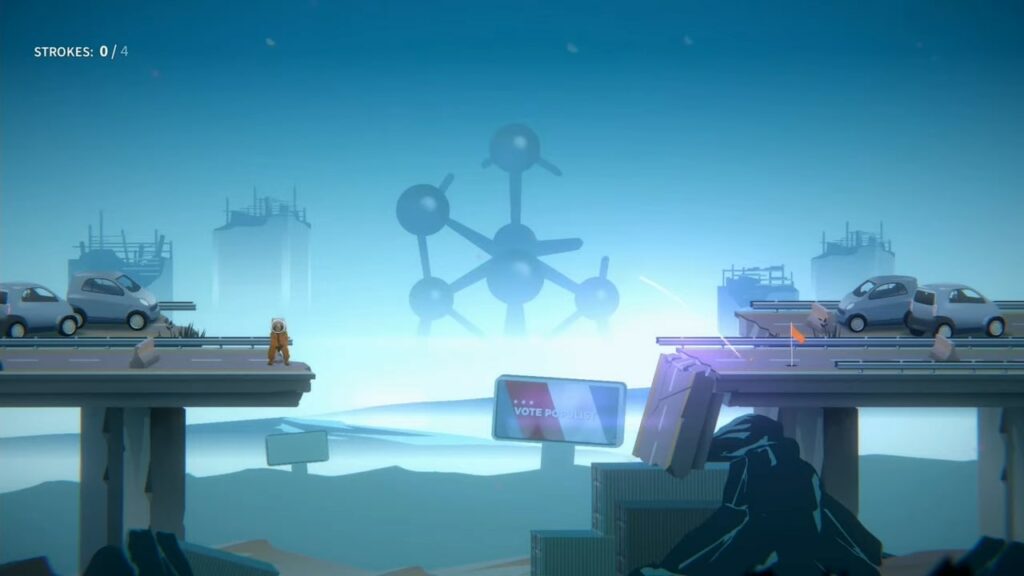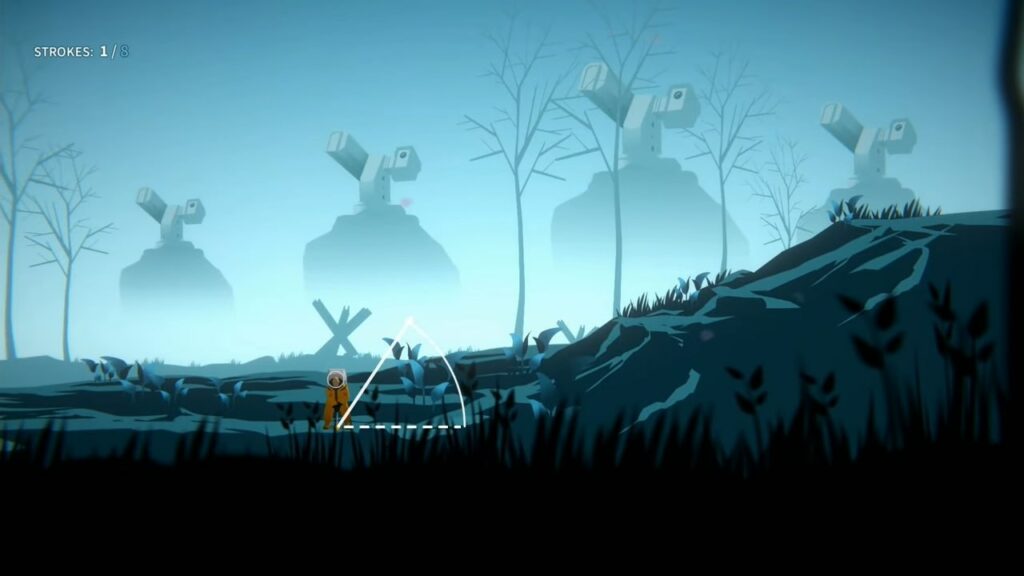
Developer: Demagog Studio
Publisher: Untold Tales
Platform: Switch, PC, PS4, Xbox One
Tested on: Switch
Golf Club Wasteland – Review
Golf games have been a video game staple ever since Computer Golf! was released on the Magnavox Odyssey in 1978. In the four decades that followed, we’ve seen everything from realistic depictions all the way to golf games aimed at people that actually hate golf. Even so, indie developer Demagog Studio managed to come up with a new take on golf games with Golf Club Wasteland. The twist is that the game is set in a post-apocalyptic version of Earth, where the super-rich treat the remains of our blue planet as their private golf getaway. So join us, as we take a trip through the toxic waste to see whether Golf Club Wasteland is a title worth checking out.
Story
The opening blurb presents us with the game’s premise in a nutshell: Earth has become an uninhabitable toxic wasteland. The super-rich have managed to get away from the environmental disasters, and have successfully started a new community on Mars. What’s left of Earth is now used as an enormous golf facility, with car wrecks, ruined buildings and abandoned roads turned into golf courses. Players take on the role of Charley, a golf enthusiast in a hazmat suit, as they attempt to tackle the various post-apocalyptic golf courses. It’s a relatively simple premise, but more info is gradually unlocked as you discover a variety of information while playing through the Story Mode, revealing how Earth ended up like this. We won’t spoil the ending, but we recommend you keep a box of tissues nearby, as things become emotional as you discover the fate of those who weren’t able to leave Earth.
Graphics
With its minimalistic UI and clean graphics, Golf Club Wasteland stands out as one of the better-looking depictions of a post-apocalyptic wasteland we’ve ever laid eyes on. With its excellent shading and clever tricks to create depth, you’re getting a game that actively deceives the player by making the world seem much larger than it actually is, although we would’ve loved to have seen some more color variety. For the most part, the backgrounds are simply the same shade of blue over and over again, with Charley himself presented in contrasting orange to make him stand out. There is the occasional splash of color, such as neon signs in the background, and certain stages also provide platforms in different shades, but ultimately, it’s not enough.
Sound
For the most part, Golf Club Wasteland’s audioscape is provided through the in-game radio feature, which not only delivers music, but snippets of other broadcasts as well. These add some more depth to the story, as they reminisce about the world that once was, and how things came to be. The voice acting in these segments is fantastic and really helps to sell the idea of what these people went through. The lo-fi tunes that comprise the majority of the game’s soundtrack help to set an atmosphere suitable for an apocalyptic wasteland, with the music being serene rather than upbeat. The sound effects are reduced to the bare essentials and although this fits the game’s overall presentation, it also means that they aren’t all that impressive either.
Gameplay
Golf Club Wasteland provides a minimalistic 2D take on the beloved sport. It’s almost unbelievable how simplistic the core gameplay is, but thankfully it works. Playing Golf Club Wasteland is simply a matter of moving your left stick to set the direction where you want the ball to go and how hard you want to hit it, and then you simply tap ‘A’ to take your shot. There’s nothing more to it. Charley will automatically hover towards the ball after it comes to a stop and if you accidentally hit it into the water, it will respawn near Charley’s feet. The game comprises 35 levels of varying difficulty, with some that can be cleared with a handful of hits and others requiring almost two dozen hits in order to successfully clear the hole. It’s clear that Demagog Studio went for a less is more approach when it comes to gameplay, and while this works for the most part, there are a few hiccups that spoil the fun.
Now, before you dismiss the game based on how simple everything seems, there is more to Golf Club Wasteland than meets the eye, thanks to the meticulous course designs. Developer Demagog Studio was able to find the right balance to make the game feel challenging without being unfair. This is mostly thanks to the variety in course design. In more ways than one, Golf Club Wasteland resembles a puzzle game more than something like Mario Golf: Super Rush. A good example is the stage that sees you hit a ball up a crane: here, you’ll need to carefully launch it from platform to platform, each one a little higher than the one before. The game relies on stage designs for its variety, as the core gameplay itself never changes.
Although the game is fairly short, there are three modes at your disposal and only the very best players will be able to clear them all. The Story Mode is the easiest one, as you can take as many hits as you like in order to complete a course. Challenge Mode presents you with the same courses, but unlike Story Mode, you can only hit the ball a certain number of times before it’s game over. If you’re able to overcome Challenge Mode, you’ll unlock Iron Mode, which allows no mistakes and requires you to clear each course with the bare minimum of hits. Completionists will find that they have their work cut out for them with this last mode. If you’re not enticed by the extra modes, you might feel like Golf Club Wasteland is a little short for the price of entry, with approximately three hours worth of content in the Story Mode. However, if you are determined to clear the Iron Mode, you’ll find that you’ll be getting plenty of hours of game time as you perfect your score.
Replaying the game in the different modes unlocks new bits of backstory, and eventually, access to a fantastic graphic novel. Given that the tidbits you unlock aren’t essential to a deeper understanding of the story, you’re not missing out on much if you decide that anything beyond the initial story mode isn’t worth it for you. Despite this, the core story is one of the driving factors to keep you playing. At certain points, we even felt like getting the player involved in the story was more important for Demagog Studio than the actual gameplay, as evidenced by the infinite amount of hits that you’re getting in Story Mode.
That said, even with the various modes shaking up how you best approach the game, Golf Club Wasteland can feel repetitive, and it’s best suited when you feel like clearing a handful of courses, rather than a lengthy run that sees you take on all 35 courses. At times, the game does get a little frustrating when you just keep failing to clear an obstacle and it’s often tricky to gauge the angle and power needed to do so. This isn’t an issue with how the courses are designed, but simply of how skilled and patient a player is. None of the courses feel particularly unfair, but this isn’t a game for those that are prone to rage quits -which is why you’re better off taking a break after clearing a particularly frustrating course.
Conclusion
While we’re not going to go as far as to say that Golf Club Wasteland is an essential title to own, it’s still an interesting little game. Wanting to discover more about the world is what kept us motivated to keep playing, and although the gameplay was occasionally frustrating, it never felt unfair. Golf Club Wasteland might feel a little light on content if you’re not a completionist, but the presentation and story make this a worthwhile purchase for anyone seeking to play a golf game that is a little different.
Golf Club Wasteland - Review,1 Comment
Leave a Reply
You must be logged in to post a comment.










[…] Highwater presents itself as a standalone story, it is set in the same world as Golf Club Wasteland and The Cub, two other Demagog Games titles. While the timeline is a bit muddy, it’s reasonable to […]